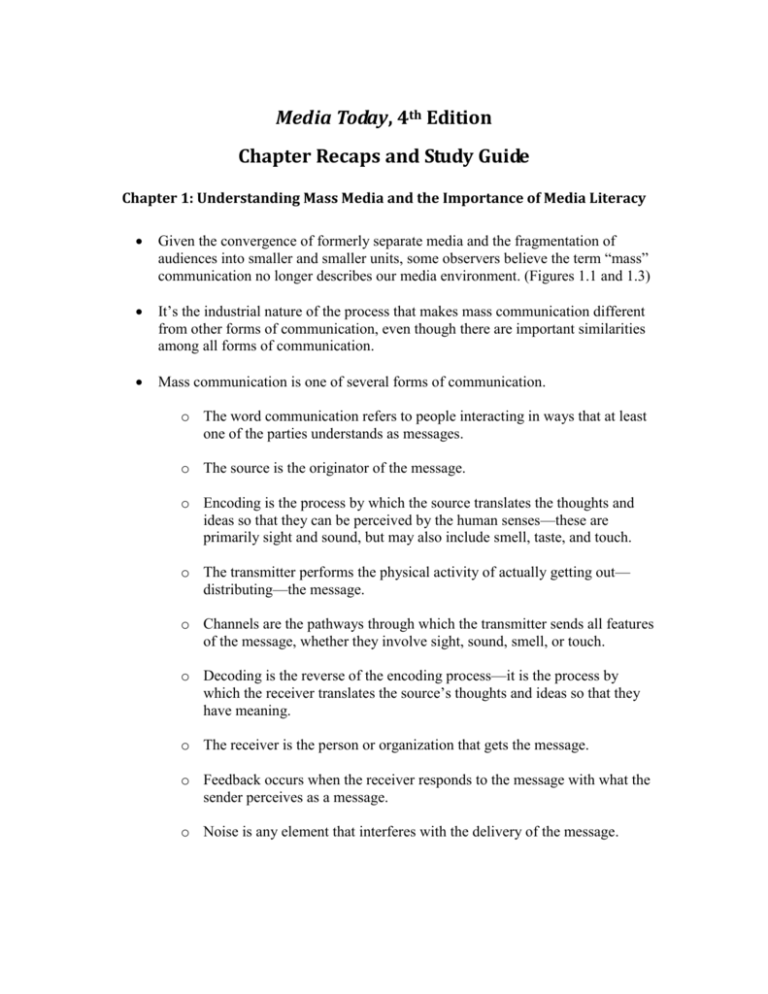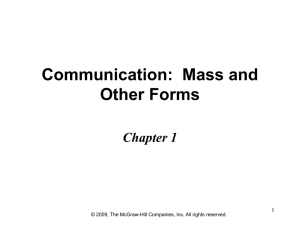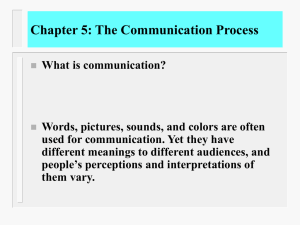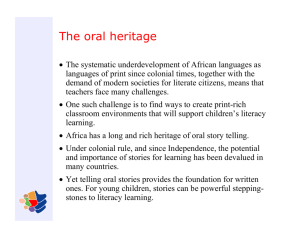Chapter 1 - Routledge
advertisement

Media Today, 4th Edition Chapter Recaps and Study Guide Chapter 1: Understanding Mass Media and the Importance of Media Literacy Given the convergence of formerly separate media and the fragmentation of audiences into smaller and smaller units, some observers believe the term “mass” communication no longer describes our media environment. (Figures 1.1 and 1.3) It’s the industrial nature of the process that makes mass communication different from other forms of communication, even though there are important similarities among all forms of communication. Mass communication is one of several forms of communication. o The word communication refers to people interacting in ways that at least one of the parties understands as messages. o The source is the originator of the message. o Encoding is the process by which the source translates the thoughts and ideas so that they can be perceived by the human senses—these are primarily sight and sound, but may also include smell, taste, and touch. o The transmitter performs the physical activity of actually getting out— distributing—the message. o Channels are the pathways through which the transmitter sends all features of the message, whether they involve sight, sound, smell, or touch. o Decoding is the reverse of the encoding process—it is the process by which the receiver translates the source’s thoughts and ideas so that they have meaning. o The receiver is the person or organization that gets the message. o Feedback occurs when the receiver responds to the message with what the sender perceives as a message. o Noise is any element that interferes with the delivery of the message. One way to understand the various kinds of communication is to compare interpersonal communication with mediated interpersonal communication (Table 1.1). Mass communication is the industrialized production and multiple distribution of messages through technological devices. o Mass media are the technological vehicles through which mass communication takes place. o Mass media outlets are enterprises that send out messages via mass media. o Mass media firms create commodities for sale in a high-risk marketplace and use research and development strategies to innovate and, as much as possible, reduce risk. How people use the mass media: o Enjoyment—refers to the personal gratification an individual gets from the media. o Companionship, including parasocial interaction. o Surveillance—Through media surveillance, individuals learn about the world beyond the immediate neighborhood. o Interpretation—Media are sources of explanations for what happens in the world. o Multiple use of mass media. Mass communication has impact on culture and society. Mass media present ideas of the culture in three broad and related ways: o The mass media identify and discuss codes of acceptable behavior within the society and how to talk about them. o The mass media tell people what and who counts in their world and why. o The mass media help people to understand themselves and their connection with, or disconnection from others. Criticisms of mass media’s relation to culture include o The use of stereotypes that reinforce prejudices. o Tremendous mass media contributions to culture diminish cultural quality. o Critics are also concerned that the media’s cultural presentations encourage political and economic manipulation. o Some argue that these criticisms paint people as too passive. And that people use media messages and different ways. Six characteristics of a media literate person o Knowledgeable about the influences that guide media organizations. o Up-to-date on political issues relating to the media. o Sensitive to ways of seeing media content as a means of learning about culture. o Sensitive to the ethical dimensions of media activities. o Knowledgeable about scholarship regarding media effects. o Able to enjoy media materials in a sophisticated way. Six principles of media literacy o Media materials construct our individual realities. o Media are influenced by industrial pressures. o Media are influenced by political pressures. o The media are constrained by format. o Audiences are active recipients of the media. o The media tell us about who we are as a society. Six main media literacy tools o CONSIDER AUTHORSHIP—Who created this message and why are they sending it? o EVALUATE THE AUDIENCE—Who are the intended targets of these media materials? How might people understand these materials similarly and differently? o DETERMINE THE INSTITUTIONAL PURPOSE—Why is the content being sent? o ANALYZE THE CONTENT—What values, lifestyles, and points of view are represented in (or omitted from ) this message? o IDENTIFY THE CREATIVE TECHNIQUES—What creative techniques are being used to attract my attention? Benefits/social issues raised by of a media literate perspective o Media conglomerate control of media channels o Increasing portrayals of sex and violence o Consequences of audience segmentation o Privacy o Global media, cultural values, and free speech.











